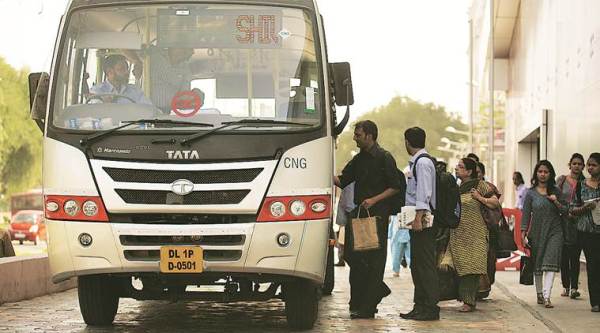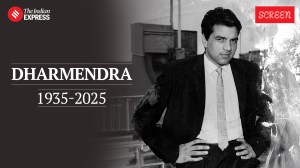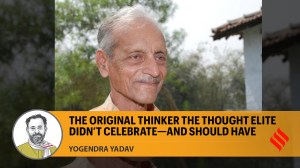Stay updated with the latest - Click here to follow us on Instagram
Delhi metro wants 15,000 e-autos for last-mile, has approached SC
The Metro’s first-of-its-kind plan to induct battery-operated three-wheelers on a large scale has come against the backdrop of its decision to scrap five tenders, floated to procure 422 low-floor MIDI buses for its feeder bus fleet.
 The DMRC’s feeder fleet currently has 174 non-AC MIDI buses and around 1,000 e-rickshaws. Express archive
The DMRC’s feeder fleet currently has 174 non-AC MIDI buses and around 1,000 e-rickshaws. Express archive
The Delhi Metro Rail Corporation (DMRC) approached the Supreme Court, seeking a relaxation of the cap on the number of three-wheeler permits in the capital, as the Metro plans to induct at least 15,000 electric autorickshaws in its feeder fleet to boost last-mile connectivity.
The Metro’s first-of-its-kind plan to induct battery-operated three-wheelers on a large scale has come against the backdrop of its decision to scrap five tenders, floated to procure 422 low-floor MIDI buses for its feeder bus fleet.
Currently, the feeder fleet comprises 174 non-AC MIDI buses and around 1,000 e-rickshaws, which serve Metro commuters coming out of around 11 stations across Delhi-NCR. Metro has also tied up with cab aggregators Ola and Uber, under which kiosks have come up at certain stations for assisting passengers in booking cabs and autos.
“We are planning to scale up the number of e-rickshaws to 5,000. But we are also looking at e-autos. There is a qualitative difference between the two. Autos provide more comfort. But there is a cap on the number of autos in Delhi. We have moved the Supreme Court for allowing 15,000 autos,” DMRC Managing Director Mangu Singh told The Indian Express.
In 1997, the SC fixed a 1 lakh cap on autos as these were mostly powered by two-stroke petrol or diesel engines, which caused heavy pollution. Subsequently, the auto fleet largely shifted to CNG.
Singh said Metro will not procure e-autos directly, but rope in aggregators by inviting open proposals with lenient stipulations, as the sector is still developing.
The proposal to induct MIDI electric buses was scrapped due to factors such as high cost, lack of availability, and a potentially large subsidy requirement from the Delhi government.
“We realised that procuring these buses would be a costly affair. By floating tenders, we were testing the market. The quotes we received were very high, mostly because the segment has no competition. The subsidy burden or the viability gap would have been very high as well. Even the Delhi government said the segment of buses we were exploring was not proper. So when the FAME (Faster Adoption and Manufacturing of Electric vehicles) scheme was launched, we applied and got approval for 100 buses,” Singh said.
On October 9, the DMRC floated two tenders — for 50 e-buses each for the corporation’s East and North clusters, pegging the estimated cost at Rs 362 crore. The buses, being procured under the FAME II scheme, will be inducted under the cluster model in which private players will procure, operate and maintain them.
But Singh said DMRC has realised the feeder buses would not ensure last-mile connectivity, as they would be unable to match the frequency of Metro trains.







